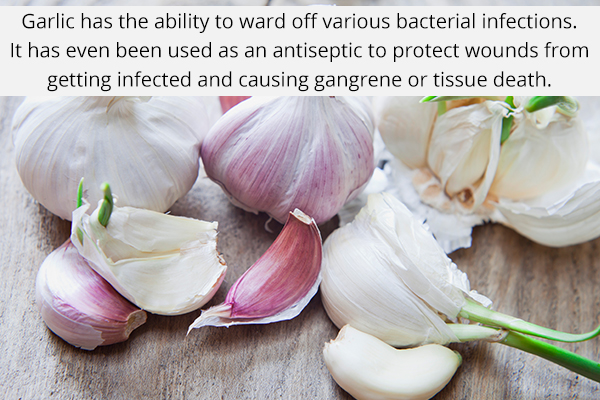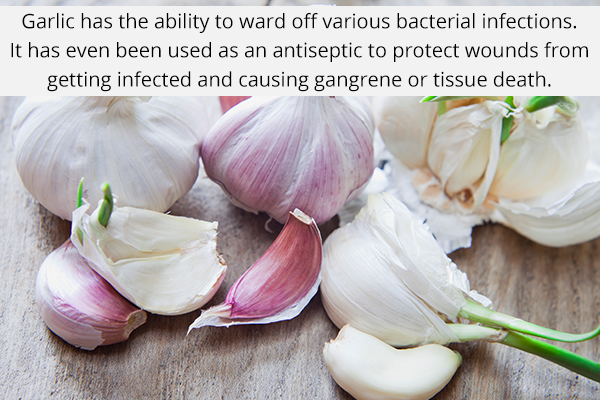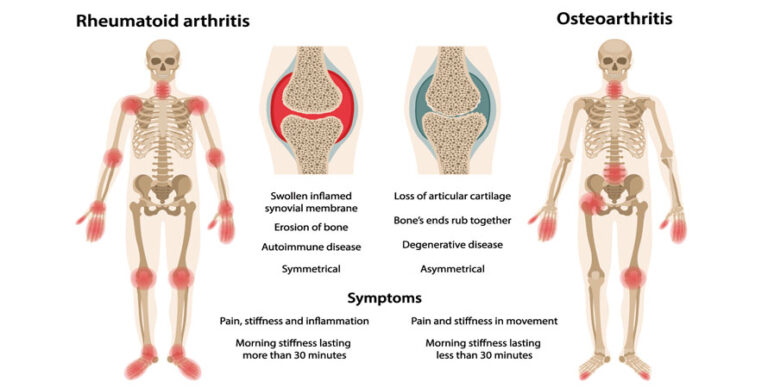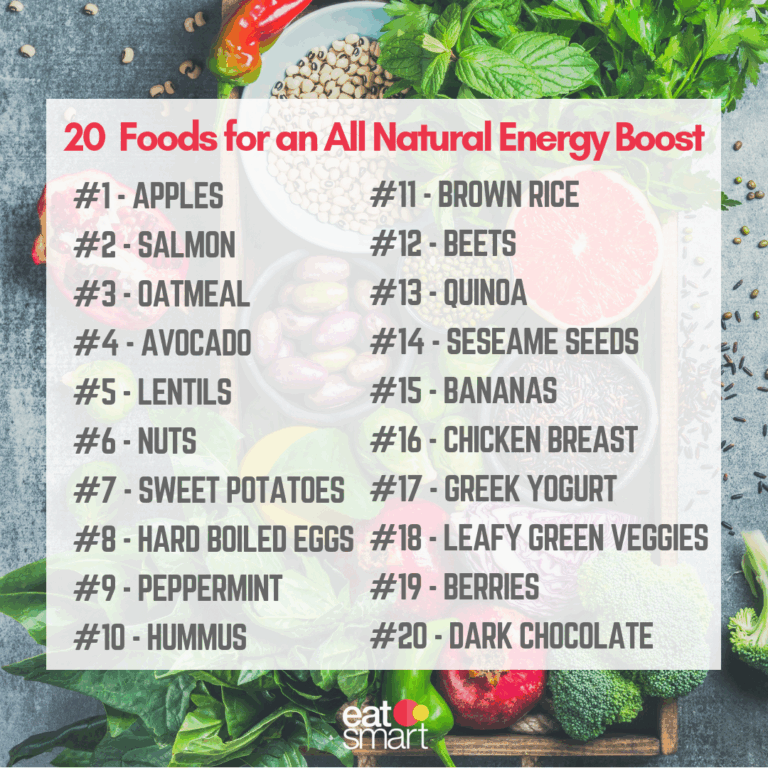The Pungent Promise: Unraveling Garlic’s Ancient Power in Fighting Inflammation Naturally
In the grand tapestry of human civilization, few plants have woven themselves as intimately into our culinary and medicinal heritage as Allium sativum, the humble garlic. Its pungent aroma, a polarizing force that either repels or entices, belies a complex symphony of compounds that have, for millennia, been whispered about in folk remedies and celebrated in kitchens worldwide. But beyond its legendary flavor and mythical status, garlic holds a profound scientific secret – a potent, natural arsenal against one of the most insidious threats to modern health: inflammation.
This is not merely a story of a culinary herb; it is a narrative stretching across continents and centuries, from the construction sites of ancient Egypt to the cutting-edge laboratories of today. It’s the tale of how human ingenuity, initially guided by intuition and observation, has gradually unraveled the molecular marvels hidden within each clove, revealing a powerful ally in our ongoing quest for health and vitality. To truly appreciate garlic’s role in fighting inflammation naturally, we must embark on a journey – a journey through history, through the intricate pathways of human biology, and into the very heart of this remarkable bulb.
The Silent Scourge: Understanding Inflammation’s Dual Nature
Before we delve into garlic’s mechanisms, it’s crucial to understand its adversary: inflammation. Often misunderstood and frequently demonized, inflammation is, at its core, a vital protective response. It’s the body’s fire alarm, signaling injury, infection, or irritation, mobilizing the immune system to repair damaged tissue and ward off pathogens. Acute inflammation – the redness, swelling, heat, and pain accompanying a cut or a sprained ankle – is a localized, controlled process that serves a critical purpose in healing.
The problem arises when this finely tuned system goes awry. Chronic inflammation, unlike its acute counterpart, is a persistent, low-grade, systemic response that smolders silently, often without obvious symptoms. It’s the uncontrolled wildfire that spreads through the body, silently damaging tissues, organs, and cells. This chronic state is now recognized as a foundational driver for a vast array of modern diseases, including cardiovascular disease, type 2 diabetes, metabolic syndrome, autoimmune disorders like rheumatoid arthritis, neurodegenerative conditions such as Alzheimer’s, certain cancers, and even mental health issues.
The causes of chronic inflammation are multifaceted: poor diet (rich in processed foods, sugar, and unhealthy fats), sedentary lifestyles, chronic stress, environmental toxins, persistent infections, and an imbalanced gut microbiome. In this landscape of widespread inflammatory triggers, the search for natural, sustainable, and effective anti-inflammatory interventions has become more urgent than ever. And it is here, in this intersection of ancient wisdom and contemporary scientific understanding, that garlic emerges as a compelling protagonist.
A Journey Through Time: Garlic’s Storied Past
The story of garlic’s medicinal use begins not in a laboratory, but in the annals of antiquity. Its pungent breath has permeated human culture for over 5,000 years, traversing civilizations and continents, always revered for its potent properties.
The ancient Egyptians were among the earliest documented enthusiasts, not just for culinary purposes, but for its medicinal prowess. Hieroglyphs and papyri, notably the Ebers Papyrus (circa 1550 BC), reveal garlic was administered for a multitude of ailments, from fatigue and infections to intestinal parasites. It was a staple in the diet of the pyramid builders, believed to impart strength and protect against disease, ensuring their formidable labor could continue uninterrupted.
Moving eastward, ancient Indian Ayurvedic medicine embraced garlic for its rejuvenating and therapeutic qualities, prescribing it for heart disease, arthritis, and respiratory issues. Similarly, in ancient China, garlic was a foundational element of traditional medicine, used to treat digestive problems, respiratory infections, and even to ward off the plague.
The Greeks and Romans also held garlic in high esteem. Hippocrates, the "father of medicine," prescribed it for infections, digestive disorders, and as a purgative. Roman soldiers consumed it for courage and strength before battle, and Pliny the Elder, in his Natural History, listed garlic as a remedy for over 60 different conditions.
Throughout the Middle Ages, as waves of plague swept across Europe, garlic gained further prominence as a protective talisman. Its strong odor was believed to ward off evil spirits and contagion, a pre-scientific understanding of its antimicrobial properties. Folk healers and herbalists across Europe and the Middle East continued to champion its use for a wide range of conditions, solidifying its reputation as a panacea.
It wasn’t until the 19th and 20th centuries that scientific inquiry began to scratch the surface of why garlic was so effective. Louis Pasteur, in 1858, observed garlic’s antibacterial activity. Later, during both World Wars, garlic was employed as an antiseptic and to prevent gangrene in soldiers due to a shortage of conventional antibiotics. This long, unbroken lineage of use, spanning millennia and diverse cultures, provides a powerful testament to garlic’s efficacy, laying the groundwork for the molecular revelations that modern science would eventually uncover.
The Science Unveiled: Decoding Garlic’s Anti-Inflammatory Arsenal
The true magic of garlic lies not in a single compound, but in a complex and dynamic interplay of sulfur-containing organic compounds, collectively known as organosulfur compounds (OSCs). These are the bioactive powerhouses responsible for garlic’s characteristic odor and, more importantly, its profound therapeutic effects.
The story of these compounds begins when garlic is damaged – crushed, chopped, or chewed. This mechanical action ruptures the cell walls, bringing two key players into contact: alliin (an odorless amino acid derivative) and the enzyme alliinase. This enzymatic reaction is the pivotal moment, converting alliin into the highly reactive and pungent allicin.
Allicin: The Initial Spark
Allicin is often considered garlic’s primary active compound, a thiosulfinate responsible for many of its immediate effects, including its potent antimicrobial activity. However, allicin is highly unstable and rapidly breaks down into a cascade of other lipid-soluble OSCs, such as diallyl disulfide (DADS), diallyl trisulfide (DATS), ajoene, and others. These derivatives, along with water-soluble compounds like S-allylcysteine (SAC) and S-allylmercaptocysteine (SAMC), are the true workhorses of garlic’s long-term anti-inflammatory and health-promoting properties. The difference in stability and solubility between these compounds dictates their bioavailability, how they interact with the body, and their ultimate therapeutic reach.
The Molecular Dance: How Garlic Intervenes
Garlic’s anti-inflammatory mechanisms are intricate and multifaceted, targeting several key pathways involved in the inflammatory cascade. For a knowledgeable audience, understanding these pathways reveals the depth of garlic’s therapeutic potential:
-
Inhibition of NF-κB Pathway:
Nuclear Factor-kappa B (NF-κB) is a master regulator of the immune response and a central player in inflammation. It’s a protein complex that controls the transcription of DNA, cytokine production, and cell survival. When activated, NF-κB triggers the expression of numerous pro-inflammatory genes, leading to the production of cytokines, chemokines, adhesion molecules, and enzymes like COX-2 (cyclooxygenase-2) and iNOS (inducible nitric oxide synthase).
Garlic’s OSCs, particularly DADS and DATS, have been shown to inhibit NF-κB activation. They do this through various mechanisms, including blocking the degradation of IκBα (an inhibitor of NF-κB) and directly interfering with NF-κB’s binding to DNA. By suppressing this master switch, garlic effectively dampens the production of a wide array of inflammatory mediators, acting at a foundational level. -
Modulation of Pro-inflammatory Cytokines:
Cytokines are small proteins that act as messengers between immune cells, orchestrating the inflammatory response. Key pro-inflammatory cytokines include Tumor Necrosis Factor-alpha (TNF-α), Interleukin-1 beta (IL-1β), and Interleukin-6 (IL-6). Elevated levels of these cytokines are hallmarks of chronic inflammation and are implicated in numerous diseases.
Garlic compounds have demonstrated the ability to significantly reduce the production and release of TNF-α, IL-1β, and IL-6 from various immune cells (macrophages, monocytes). This modulation helps to quell the inflammatory storm, preventing the escalation of immune responses that can damage healthy tissues. -
Inhibition of Cyclooxygenase (COX) Enzymes and Prostaglandins:
The COX enzymes (COX-1 and COX-2) are responsible for converting arachidonic acid into prostaglandins, which are lipid compounds that play crucial roles in inflammation, pain, and fever. While COX-1 is constitutively expressed and involved in maintaining normal physiological functions (like gastric protection), COX-2 is primarily induced during inflammation. Many non-steroidal anti-inflammatory drugs (NSAIDs) work by inhibiting COX enzymes, particularly COX-2.
Research suggests that garlic OSCs can inhibit both COX-1 and COX-2 activity, thereby reducing the synthesis of pro-inflammatory prostaglandins and thromboxanes. This mechanism contributes to garlic’s pain-relieving and anti-inflammatory effects, similar to NSAIDs but often with fewer side effects. -
Antioxidant Powerhouse and Nrf2 Activation:
Oxidative stress, an imbalance between the production of reactive oxygen species (free radicals) and the body’s ability to neutralize them, is a significant driver and perpetuator of inflammation. Free radicals damage cellular components, leading to further inflammation.
Garlic is a potent antioxidant. Its OSCs can directly scavenge free radicals. More importantly, garlic activates the Nuclear Factor Erythroid 2-Related Factor 2 (Nrf2) pathway. Nrf2 is a transcription factor that, when activated, upregulates the expression of a battery of endogenous antioxidant and detoxification enzymes, such as glutathione S-transferase, superoxide dismutase (SOD), and catalase. By boosting the body’s intrinsic antioxidant defenses, garlic effectively neutralizes oxidative stress, thereby breaking a critical link in the chronic inflammatory cycle. SAC, in particular, is noted for its Nrf2-activating properties. -
Modulation of Immune Cell Function:
Garlic compounds can influence the function of various immune cells, including macrophages, lymphocytes, and natural killer (NK) cells. They can modulate their activation, proliferation, and cytokine production, promoting a more balanced immune response. For instance, garlic has been shown to shift macrophage polarization from a pro-inflammatory (M1) to an anti-inflammatory (M2) phenotype, which is crucial for resolving inflammation and tissue repair. -
Nitric Oxide (NO) Regulation:
Nitric oxide is a signaling molecule with diverse physiological roles. While NO is important for vasodilation and immune function, excessive production by inducible nitric oxide synthase (iNOS) during inflammation can contribute to tissue damage and oxidative stress. Garlic compounds have been shown to inhibit iNOS expression, thus moderating NO production in inflammatory conditions.
The synergistic action of these various mechanisms – the direct inhibition of inflammatory pathways, the enhancement of antioxidant defenses, and the modulation of immune cell function – paints a comprehensive picture of garlic’s extraordinary anti-inflammatory prowess.
Targeting Specific Inflammatory Conditions: Practical Applications
With this understanding of its molecular mechanisms, garlic’s utility in addressing specific inflammatory conditions becomes clear:
-
Cardiovascular Disease (CVD): Chronic, low-grade inflammation is a critical factor in the development and progression of atherosclerosis, the hardening of the arteries. Garlic, particularly Aged Garlic Extract (AGE), has been extensively studied for its cardioprotective effects. It reduces inflammation in arterial walls, lowers oxidized LDL cholesterol (a key initiator of atherosclerotic plaque), inhibits platelet aggregation (reducing clot risk), and improves endothelial function. Its ability to modulate NF-κB and reduce inflammatory cytokines directly contributes to these benefits.
-
Arthritis (Osteoarthritis and Rheumatoid Arthritis): Both forms of arthritis are characterized by joint inflammation. In osteoarthritis, inflammation contributes to cartilage degradation, while in rheumatoid arthritis, it’s an autoimmune response leading to synovial tissue destruction. Garlic’s anti-inflammatory and antioxidant properties can help reduce pain, swelling, and stiffness in arthritic joints by inhibiting COX enzymes and reducing pro-inflammatory cytokines like TNF-α and IL-6. SAC, in particular, has shown promise in protecting cartilage.
-
Metabolic Syndrome and Type 2 Diabetes: Chronic inflammation is a hallmark of insulin resistance and metabolic syndrome. Adipose tissue (fat) in obese individuals secretes pro-inflammatory cytokines that impair insulin signaling. Garlic helps by reducing systemic inflammation, improving insulin sensitivity, and protecting pancreatic beta-cells from oxidative damage. Its ability to lower blood glucose and lipid levels further contributes to its benefits in these conditions.
-
Gut Health and Inflammatory Bowel Disease (IBD): The gut microbiome plays a critical role in immune regulation and inflammation. An imbalanced microbiome (dysbiosis) can trigger gut inflammation, contributing to conditions like IBD (Crohn’s disease, ulcerative colitis). Garlic possesses prebiotic properties, promoting the growth of beneficial gut bacteria, and its antimicrobial compounds can help suppress harmful pathogens. By modulating gut flora and directly reducing gut inflammation through NF-κB inhibition, garlic can support gut health.
-
Respiratory Health (Asthma, Allergies): Allergic asthma and other respiratory conditions involve inflammation of the airways. Garlic’s ability to modulate immune responses and reduce inflammatory mediators like leukotrienes (another class of inflammatory lipids) may offer relief. Its antioxidant properties can also protect lung tissue from oxidative damage caused by environmental pollutants or allergens.
-
Cancer Prevention: While not a primary anti-cancer agent, chronic inflammation is a known promoter of cancer initiation and progression. By consistently dampening inflammatory pathways, reducing oxidative stress, and modulating immune surveillance, garlic contributes to an anti-carcinogenic environment, particularly in cancers of the digestive tract (colon, stomach).
Optimizing Garlic’s Potential: From Kitchen to Supplement
Harnessing garlic’s anti-inflammatory power effectively requires an understanding of how its delicate chemistry is influenced by preparation and consumption.
Culinary Considerations: The Art of Activation
The key to maximizing allicin production, and thus the subsequent cascade of beneficial OSCs, lies in the initial crushing or chopping of fresh garlic. This action activates the alliinase enzyme. A crucial tip is to crush or chop the garlic and then let it sit for 5-10 minutes before cooking. This "rest period" allows the alliinase enzyme sufficient time to convert alliin into allicin before heat (which denatures alliinase) can deactivate it.
- Raw Garlic: Consuming raw garlic (e.g., in dressings, pestos, or lightly sautéed dishes where it’s added at the end) delivers the most potent dose of allicin and its immediate derivatives. This is where you get the most intense flavor and the most robust initial anti-inflammatory hit.
- Cooked Garlic: While cooking does reduce some of garlic’s volatile compounds, it doesn’t render it useless. Longer cooking times and higher heat will diminish the allicin content, but other stable OSCs like SAC and SAMC are more heat-stable and still confer benefits. Slow roasting or simmering garlic, while changing its flavor profile, still retains valuable compounds. The "rest period" before cooking becomes even more critical for cooked applications.
Supplementation: Beyond the Clove
For those who dislike the taste, smell, or digestive upset caused by raw garlic, or who seek a more standardized and concentrated dose, garlic supplements offer an alternative.
- Aged Garlic Extract (AGE): This is arguably the most well-researched and highly recommended form of garlic supplement. AGE is produced by aging sliced raw garlic in an ethanol-water solution for up to 20 months. This process converts the unstable, odor-causing allicin into more stable, water-soluble, and lipid-soluble OSCs, primarily SAC and SAMC, which are highly bioavailable and potent antioxidants. AGE is virtually odorless and generally well-tolerated, making it an excellent choice for consistent anti-inflammatory benefits.
- Garlic Oil Macerates: These are garlic cloves steeped in vegetable oil. They contain some lipid-soluble OSCs but can vary greatly in potency.
- Garlic Powder/Dried Garlic: These are made from dried and ground garlic. While they contain some alliin, the alliinase enzyme may be denatured during processing, limiting allicin formation.
- Deodorized Garlic: Often processed to remove the pungent compounds, which unfortunately also removes many of the beneficial OSCs.
When choosing a supplement, look for standardized extracts, especially AGE, to ensure consistent potency and the presence of key bioactive compounds.
Dosage and Safety:
There is no universally prescribed dose for garlic, as it depends on the form and the individual.
- Fresh Garlic: A common recommendation for health benefits is 1-2 cloves (approximately 4 grams) of raw, crushed garlic per day.
- Aged Garlic Extract: Clinical studies often use doses ranging from 600 mg to 1,200 mg per day, typically divided into two doses.
Potential Side Effects and Interactions:
While generally safe, garlic does have some considerations:
- Halitosis and Body Odor: The most common side effect, due to sulfur compounds being metabolized and excreted through breath and skin.
- Gastrointestinal Upset: Heartburn, nausea, and diarrhea can occur, especially with large doses of raw garlic.
- Blood Thinning: Garlic has mild antiplatelet effects. Individuals on anticoagulant medications (e.g., warfarin, aspirin) should exercise caution and consult their doctor before consuming large amounts of garlic or supplements, as it could increase the risk of bleeding.
- Drug Interactions: Garlic can interact with certain medications, including anti-HIV drugs, cyclosporine, and some blood pressure medications. Always consult a healthcare professional, especially if you have underlying health conditions or are on prescription drugs.
The Holistic Perspective: Garlic as Part of a Lifestyle
It’s crucial to understand that while garlic is a powerful natural medicine, it is not a magic bullet. Its benefits are maximized when integrated into a broader lifestyle that supports overall health and actively combats inflammation.
- Dietary Synergy: Garlic thrives in a diet rich in whole, unprocessed foods. It is a cornerstone of the Mediterranean diet, which is inherently anti-inflammatory. Pairing garlic with other anti-inflammatory foods – leafy greens, colorful fruits and vegetables, healthy fats (olive oil, avocados), fatty fish (omega-3s), nuts, and seeds – creates a synergistic effect that amplifies its benefits.
- Beyond the Plate: Addressing chronic inflammation requires a holistic approach that extends beyond diet. Regular physical activity, stress management techniques (meditation, yoga, mindfulness), adequate sleep, and avoidance of environmental toxins are all critical components. Garlic acts as a powerful adjuvant, enhancing the body’s natural resilience when these other factors are also in place.
- Prevention vs. Cure: While garlic can help manage existing inflammatory conditions, its greatest power lies in prevention. Consistent, moderate intake as part of a healthy lifestyle can help keep inflammatory pathways in check, reducing the risk of chronic disease development over time.
The Road Ahead: Future Research and Unanswered Questions
Despite millennia of use and decades of scientific inquiry, the full spectrum of garlic’s anti-inflammatory potential continues to be explored. Future research will likely focus on:
- Personalized Nutrition: Understanding how individual genetic variations influence the metabolism and efficacy of garlic compounds.
- Specific Compound Efficacy: Delving deeper into the unique contributions of individual OSCs and their optimal ratios for different inflammatory conditions.
- Gut-Brain Axis: Further elucidating garlic’s role in modulating the gut microbiome and its impact on systemic inflammation and neurological health.
- Long-Term Studies: Conducting more extensive, long-term human clinical trials to solidify dosage recommendations and confirm sustained benefits.
- Bioavailability Enhancement: Exploring novel delivery methods to improve the absorption and targeted action of garlic’s active compounds.
The story of garlic is far from over. Each new study, each new discovery, adds another rich layer to its already illustrious history, reaffirming its place as a botanical marvel.
Conclusion: Reclaiming Health, One Clove at a Time
The journey through garlic’s history, chemistry, and biological impact reveals a profound truth: ancient wisdom, when subjected to rigorous scientific scrutiny, often unveils mechanisms of extraordinary sophistication. The pungent promise of garlic is not a myth but a tangible reality, rooted in a complex array of organosulfur compounds that actively disarm the inflammatory cascade at multiple molecular checkpoints.
In an era where chronic inflammation silently erodes the health of millions, the simple, accessible, and potent power of garlic offers a beacon of hope. From the pyramids of Egypt to the modern kitchen, from the battlefields of ancient Rome to the cutting edge of molecular biology, garlic has consistently proven its worth. It serves as a potent reminder that nature, in its infinite wisdom, often provides the most elegant and effective solutions to our most pressing health challenges.
By embracing garlic – whether in its raw, vibrant form or as a carefully crafted supplement – we are not merely adding a flavor to our dishes; we are actively engaging in a dialogue with our biology, empowering our bodies to fight the silent fire of inflammation, and reclaiming a fundamental aspect of our natural health, one potent clove at a time. The story of garlic is, ultimately, the story of resilience, healing, and the enduring power of nature’s pharmacy.







